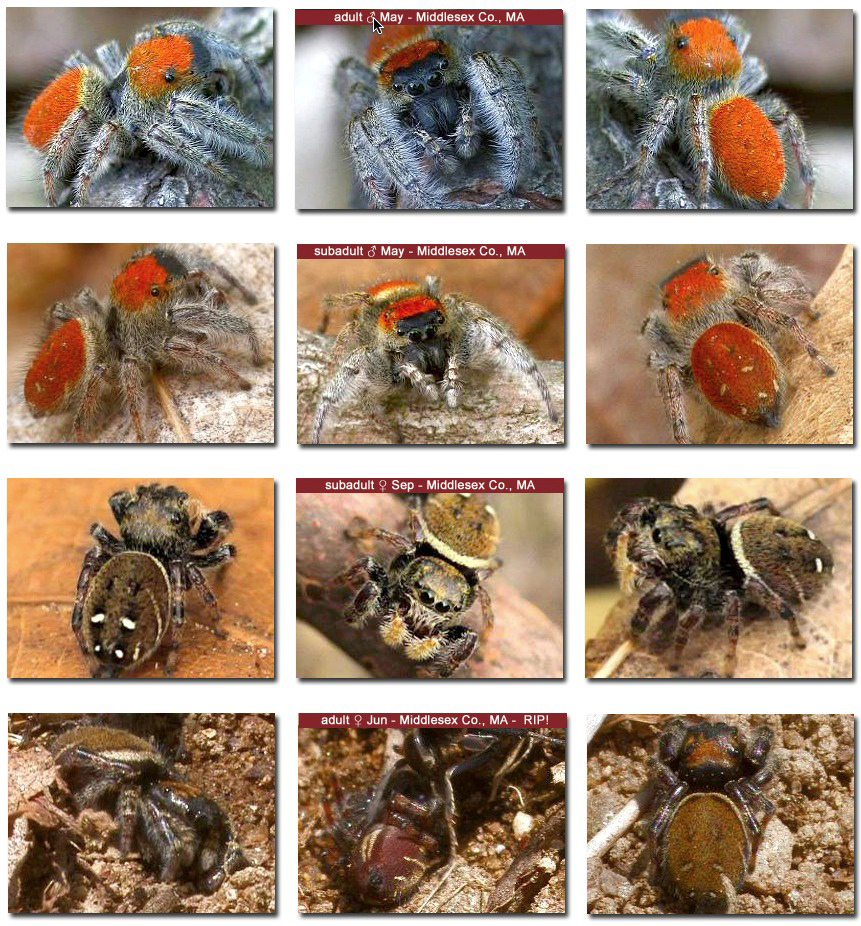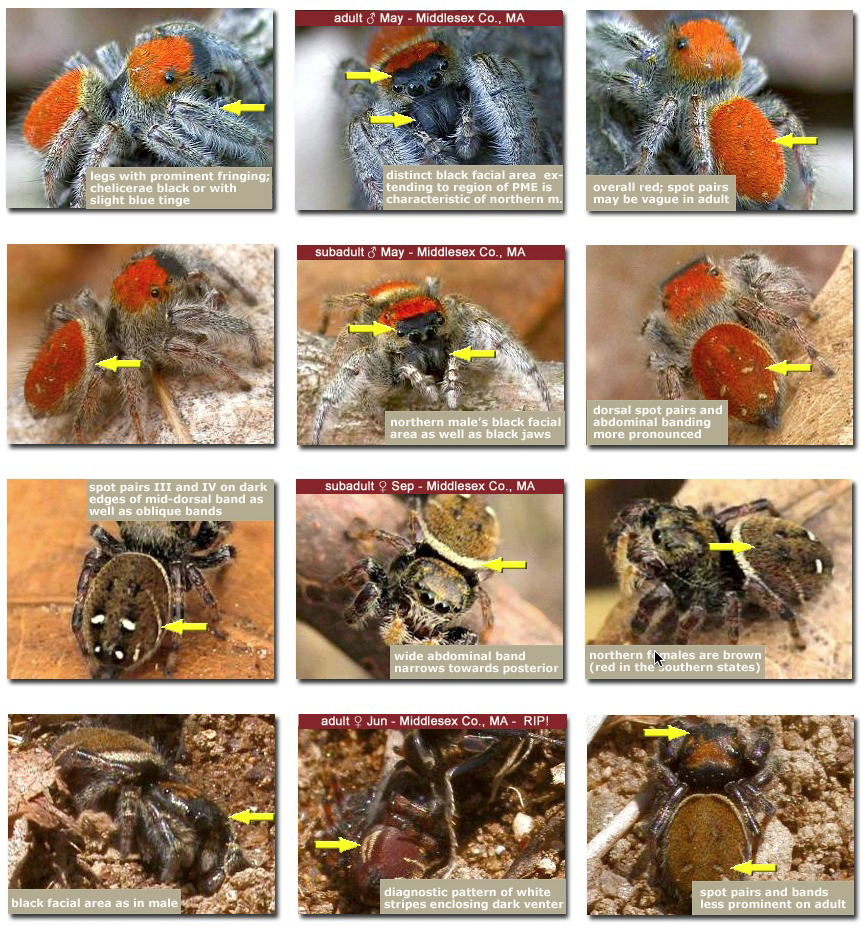Phidippus whitmani (Peckham & Peckham, 1909 )
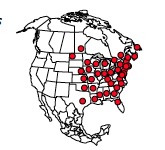
Richman, Cutler & Hill 2012
Edwards groups the Phidippus spiders in three categories based on the phenology of their maturation: “spring-early summer,” “mid-summer,” and “late summer-autumn” and indicates Phidippus whimani is a “spring-maturing” species. These groupings, along with habitat associations, provide the naturalist with the when and where of tracking down a given species. The seasonal timing of maturation is associated with specific life history events. P. whimani males having over-wintered in close proximity to females (sometimes in the same burrow) emerge in their penultimate stage and shortly thereafter molt into the adult stage. Subsequently the females emerge and go about the business of choosing a mate and providing for the next generation. Based on my experience males are much easier to locate than females. Differences in both adult forms and behaviors each play a part. The scarlet red males actively patrol their territory while the tawny-colored females seem to spend more time under the oak leaf litter. The first female P. whimani I encountered was found for me by a wasp! See video.
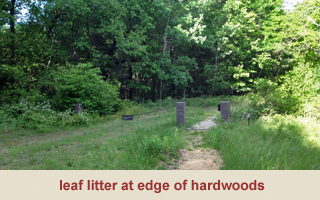
Massachusetts – First State / County Records
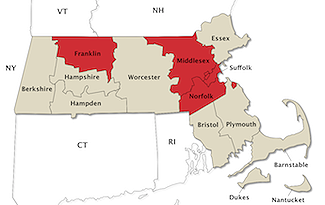
- ♦ J. H. Emerton – Phidippus Whitmani – Norfolk (Sharon) – Emerton, 1909: 224, pl. 11 f. 5, pl. 12 f. 1.
- ♦ – P. Whitmanii – Suffolk (Boston) – Peckham, 1909: 394, pl. 29, f. 6
- ♦ H. W. L. R. Levi / MCZ – Phidippus whitmani – Middlesex (Pepperell), October 2002 – Catalog #45472
- ♦ – P. w. – Franklin – Edwards, 2004: 79, f. C49-51, 254-260
- ♦ Connecticut – P. whitmanii – Kaston, 1948: 486, 26 records
- Edwards, G. B. 2004. Revision of the jumping spiders of the genus Phidippus (Araneae: Salticidae). Occasional Papers of the Florida State Collection of Arthropods 11: i-viii, 1-156, 350 figs.
